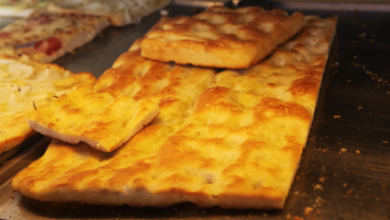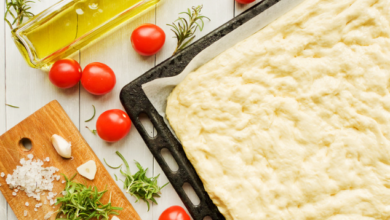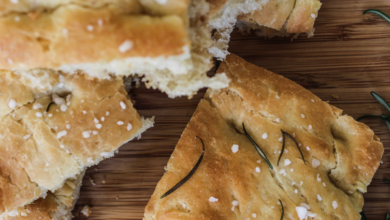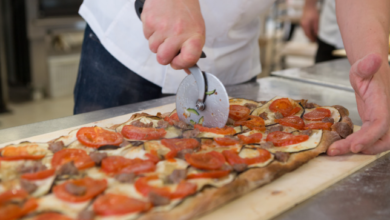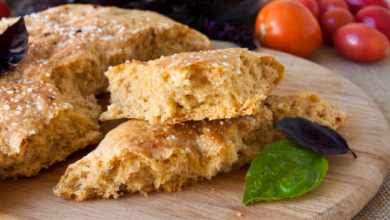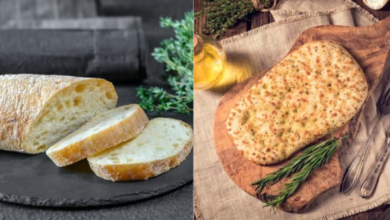Why is my focaccia so oily? It’s not supposed to be like this!
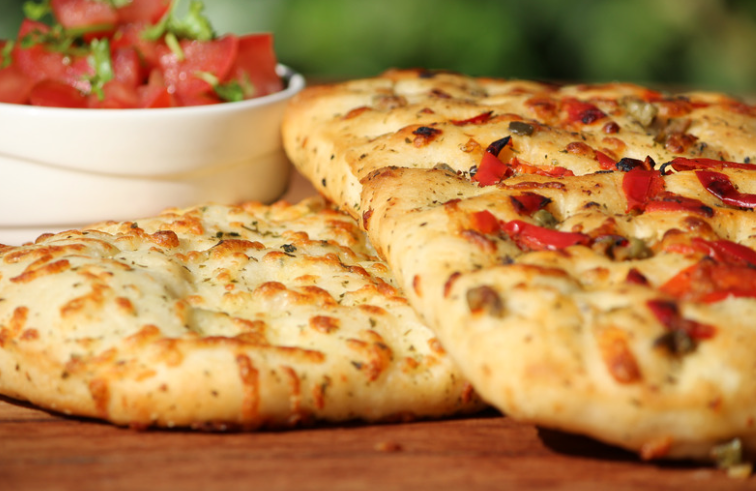
What To Know
- When the dough is proofed for too long, the yeast consumes all the available sugars, resulting in a lack of structure and an oily texture.
- Under-baking the bread can result in a raw or doughy interior, which may feel oily due to uncooked oil.
- To reduce the oiliness of leftover focaccia, reheat it in a toaster oven or on a baking sheet in a preheated oven.
Focaccia, the beloved Italian flatbread, is renowned for its airy crumb and crispy exterior. However, sometimes the joy of baking focaccia can be marred by an unexpected issue: excessive oiliness. If you’ve found yourself asking, “Why is my focaccia so oily?” fear not. This comprehensive guide will delve into the potential causes and provide practical solutions to help you achieve the perfect focaccia every time.
Over-Proofing
Proofing is a crucial step in the focaccia-making process, allowing the dough to rise and develop its characteristic texture. However, over-proofing can lead to an excessively oily loaf. When the dough is proofed for too long, the yeast consumes all the available sugars, resulting in a lack of structure and an oily texture.
Solution:
- Follow the recipe’s proofing instructions precisely.
- Avoid over-proofing the dough by checking its rise regularly.
- If the dough has over-proofed, punch it down and let it rest for a few minutes before shaping and baking.
Incorrect Oil Measurement
Focaccia dough requires a specific amount of oil to achieve its tender crumb. However, using too much oil can make the bread greasy and dense.
Solution:
- Measure the oil accurately using a measuring spoon or cup.
- Avoid adding extra oil during kneading or shaping.
Under-Baking
Baking focaccia at the correct temperature and for the appropriate duration is essential to prevent oiliness. Under-baking the bread can result in a raw or doughy interior, which may feel oily due to uncooked oil.
Solution:
- Preheat the oven thoroughly before baking.
- Bake the focaccia for the recommended time, or until it is golden brown and sounds hollow when tapped.
- Insert a toothpick into the center of the bread to check for doneness. If the toothpick comes out clean, the bread is ready.
Excessive Oil in the Dough
If you have added too much oil to the dough during kneading, it may result in an oily loaf.
Solution:
- Be careful not to overwork the dough, as this can cause the gluten to develop too much, trapping oil within the bread.
- If you accidentally add too much oil, try adding a small amount of flour to absorb the excess.
Improper Pan Preparation
The pan you use for baking focaccia should be properly prepared to prevent the bread from sticking and absorbing excess oil.
Solution:
- Grease and flour the pan liberally before pouring in the dough.
- Use a non-stick baking sheet or a cast-iron skillet for even cooking.
Using Low-Quality Oil
The type of oil you use can also affect the oiliness of focaccia. Using low-quality or rancid oil can impart an unpleasant taste and make the bread greasy.
Solution:
- Use high-quality olive oil or another type of oil suitable for baking.
- Store the oil properly in a cool, dark place to prevent it from going rancid.
Final Thoughts: The Perfect Focaccia
By addressing the potential causes outlined above, you can avoid oily focaccia and enjoy the perfect balance of flavors and textures. Remember, patience and attention to detail are key to achieving a delicious and satisfying loaf.
What People Want to Know
Q: Can I use butter instead of oil in focaccia dough?
A: Yes, you can use unsalted butter instead of oil. However, it may slightly alter the flavor and texture of the bread.
Q: How can I reduce the oiliness of leftover focaccia?
A: To reduce the oiliness of leftover focaccia, reheat it in a toaster oven or on a baking sheet in a preheated oven. This will help crisp up the exterior and remove excess oil.
Q: What can I do with oily focaccia?
A: If your focaccia is too oily, you can use it to make croutons or breadcrumbs. Simply cut the bread into cubes and toast it in the oven until golden brown.
